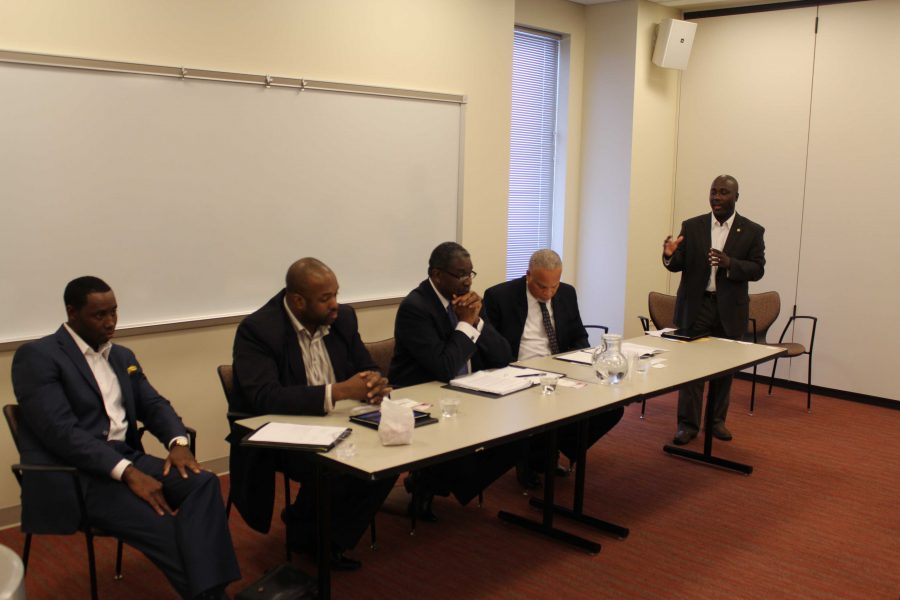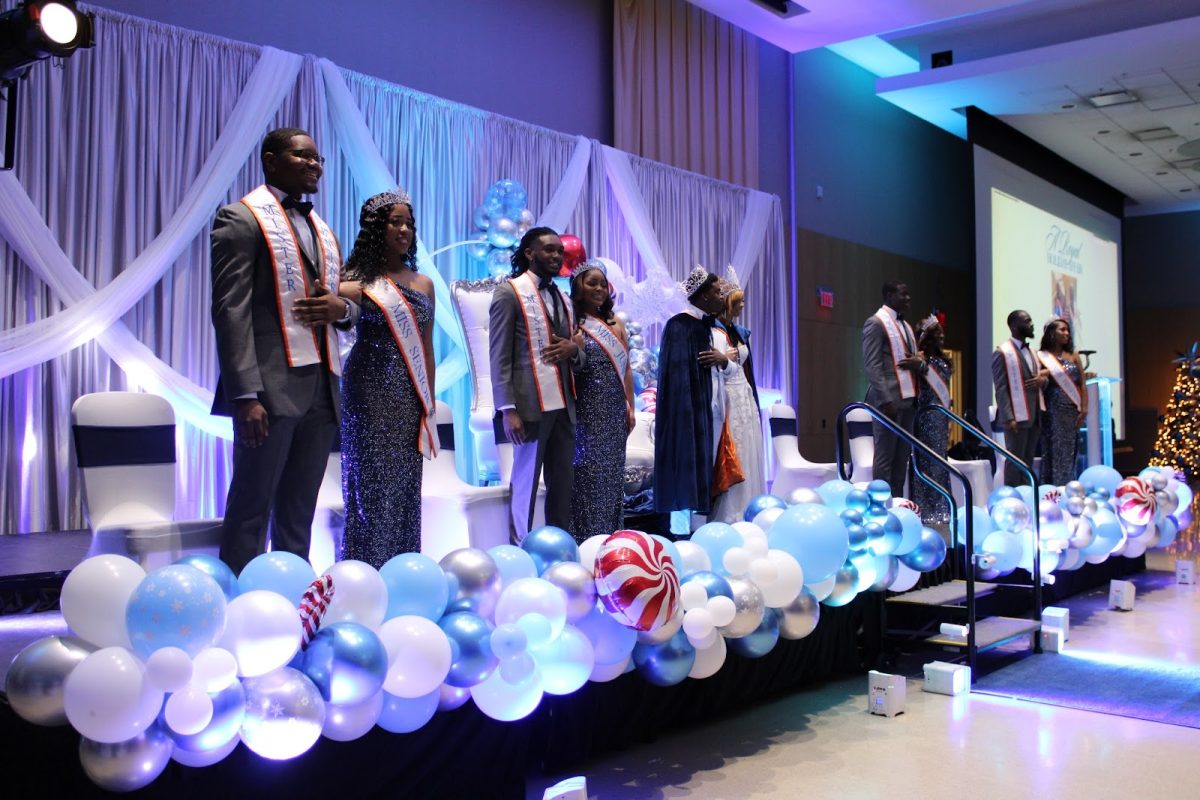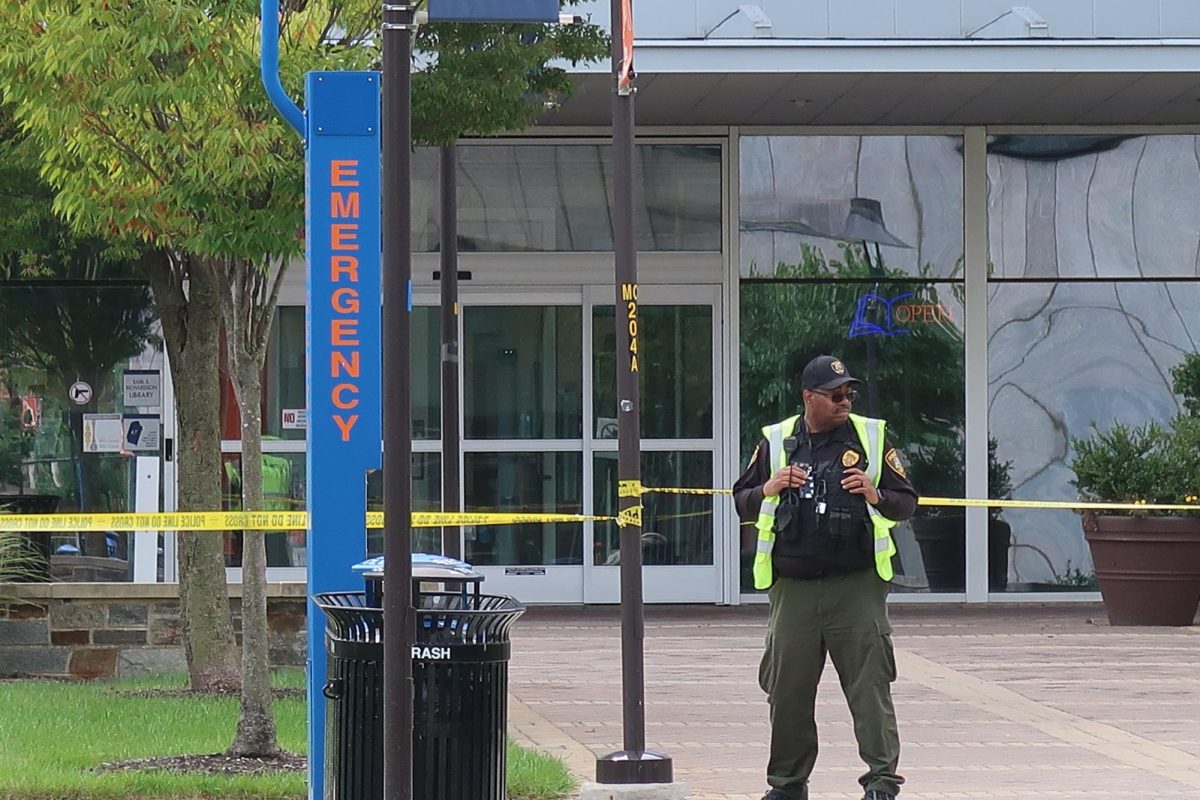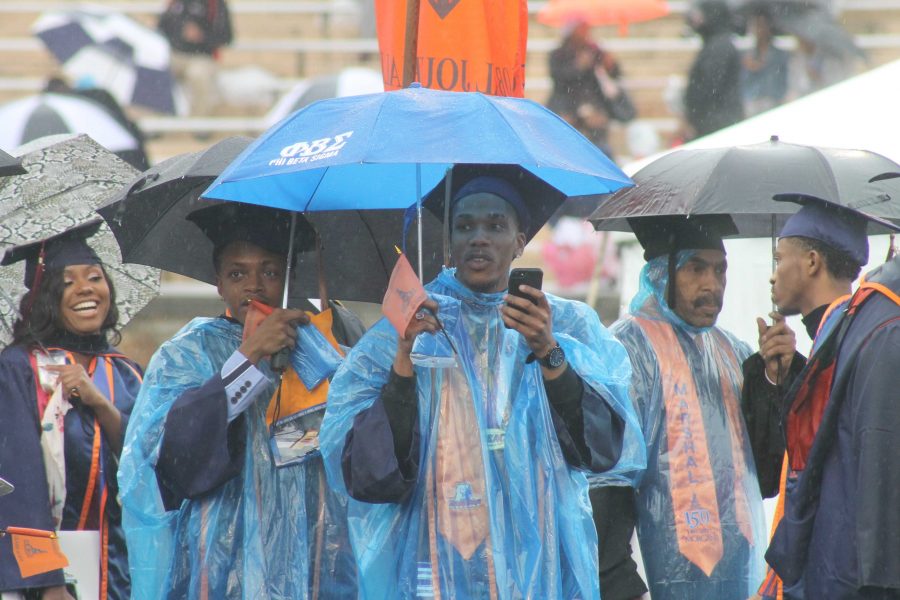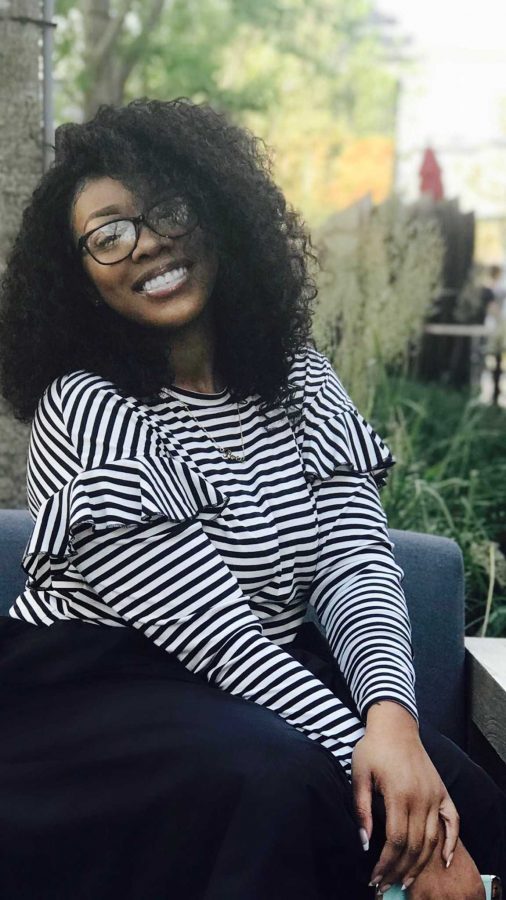What comes to mind when thinking of a hip-hop rapper?
Little Wayne backstage before a concert? Maybe he takes a sip out of his infamous “cup” and then checks a mirror to make sure his low sagging pants are showing just enough underwear? Or maybe it’s Rick Ross, on his way to the club, stopping by his dealer’s house to make sure he has enough molly to pour in his date’s champagne (she won’t even know it)? Or Flavor Flav? He is smiling, bright gold teeth glimmering, as he yells his catch phrase, “Yeah Boy!” at a multiracial audience. Or Kanye’s arrogance in yet another radio interview where he repeatedly cuts off the journalist as they discuss his clothing line?
Image plays a big role in media—so big, in fact, that those stereotypical depictions may have created a stigma for all black men, suggested panelists at a recent Morgan conference.
The gathering, a workshop titled “Black Men in the Media,” was part of a larger exploration of issues affecting African American men. Taking place in the Student Center in October, the Black Men Matter II conference tackled themes ranging from crime and drug use to media and mental health.
The media session drew a sizeable group. “Our brothers are being judged by the world, other races and themselves,” said an audience member. All forms of media are filled with black men but the roles they are typically given are limited to angry abusers, low-lifes, losers, drug dealers, criminals, thugs or even dead-beat dads, he complained.
But one question perists: do black men incriminate themselves into stereotypes or are these images the only ones available for black men to step into?
“Connect with stereotypes instead of disconnecting to overcome them,” said Derrick Fletcher a WEAA radio host who was on the panel. “We, as black men, fulfill the purpose of social media. If we show disinterest it will go away.”
Negative stereotypes are dangerous because they can be internalized, panelists warned. That’s why media that depicts black males as dumb, violent and lazy can affect their life direction.
“People’s perception of themselves are shaped by others perceptions of them,” Pittsburg University School of Social Work dean Larry Davis said in 2011, announcing a report on African American men and boys. He noted that research shows “this affects the way whites see blacks, the way blacks believe whites see them, and the way blacks see themselves.”
In the 1970’s hip-hop became a means for blacks, “in the struggle,” to express themselves and tell a story about their lives in order to relate to people like them. But the victory of rap was doused by the crack epidemic. When drug dealers begin to rap, the two “professions” became forever entwined—and black men have been associated with that image ever since.
Kanye West described it best with his “Heard Em Say” lyrics, explaining how drug dealers are viewed in his hometown of Chicago: “Where I’m from, the dope boys is the rock stars, but they can’t cop cars without seeing cop cars, I guess they want us all behind bars.”
Drug use continues to inform the music of mainstream rap artists. Their lyrics often tell listeners how they have sold drugs, served jail time and used violence as a means to overcome obstacles. It has also become common for rappers to brag about the number of women they’ve slept with and could sleep with, by sexualizing their bodies in music videos. Rappers wear “chains” and drive expensive cars, while using catchy beats and explicit language to express it all.
Some rappers like NWA have used songs like, “F**k the Police”, to express police brutality. A verse from Rocko’s song, “U.O.E.N.O” said “Got my killers with me right now” lets their opposition know they are ready to fight. Sex was the main message from Big Krit in, “What You Mean You Ain’t Nasty?”
Young black fans gravitate towards the images placed in the media by the hip-hop lifestyle whether it is the sex, the drug use or distribution, the shiny jewelry or the expensive clothing. For that reason when blacks see their favorite rapper associated with a particular brand or way of life, they are more inclined to buy a certain items or act certain ways in order to be a part of that same lifestyle.
Davis, from the University of Pittsburg, told local reporters, “One of the most important things that any group of people can do is control the image of themselves.”
Panelists at Morgan’s Black Men Matter II conference made clear that most of these images are incorrect representations and it is time that mainstream media updates its perception of black men. “We must change the way black men are perceived and perceive themselves,” said Monzona Whaley, currently Mr. Morgan State University. “People make money off of negative stories. [Black] males have to take responsibility for the images they portray.”
Panelists discussed whether social media might be a way to combat stereotypes. Facebook, YouTube, Twitter, MySpace and Instagram could be ways to push positive images and messages to one another. It takes is a concise effort about what is stated or produced by black men and also the type of media sources they gather their information from.
Social media is a tool that connects people from all around the world, for free. For example, Benjamin Crump, the attorney for Trayvon Martin said to reporters, “Major media finds it insignificant that a black man was killed because it happens all the time.” But social media was used as a way to tell about the injustice Trayvon Martin was receiving and drove the black community to band together so “Mainstream media found out by chance thanks to Twitter, Facebook, etc.”
A panelist in the forum said, “Social media has all the power because it gives every citizen the opportunity to become a journalist. If the right news or messages are spread from the right people, then the world will have no choice but to follow along.”
Social media could be a great solution to solving a huge question, why do black men matter? The image of black men in the media wasn’t tarnished overnight and it will take work from within the African American community to create a new and improved image, panelists asserted.


